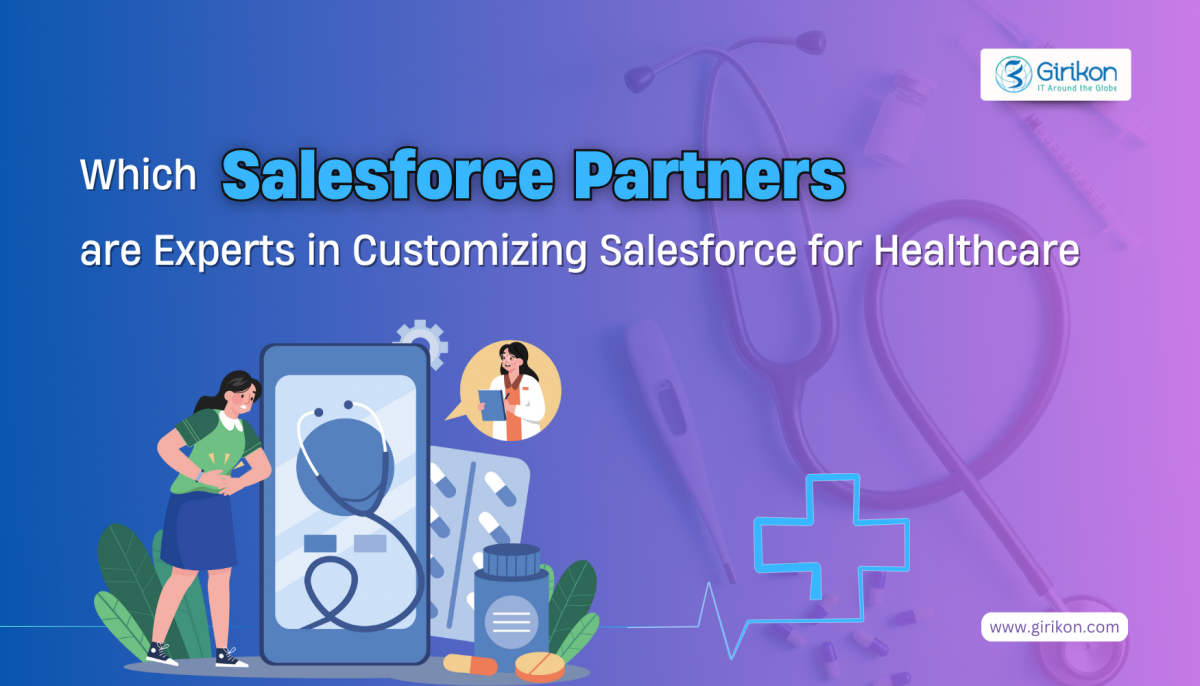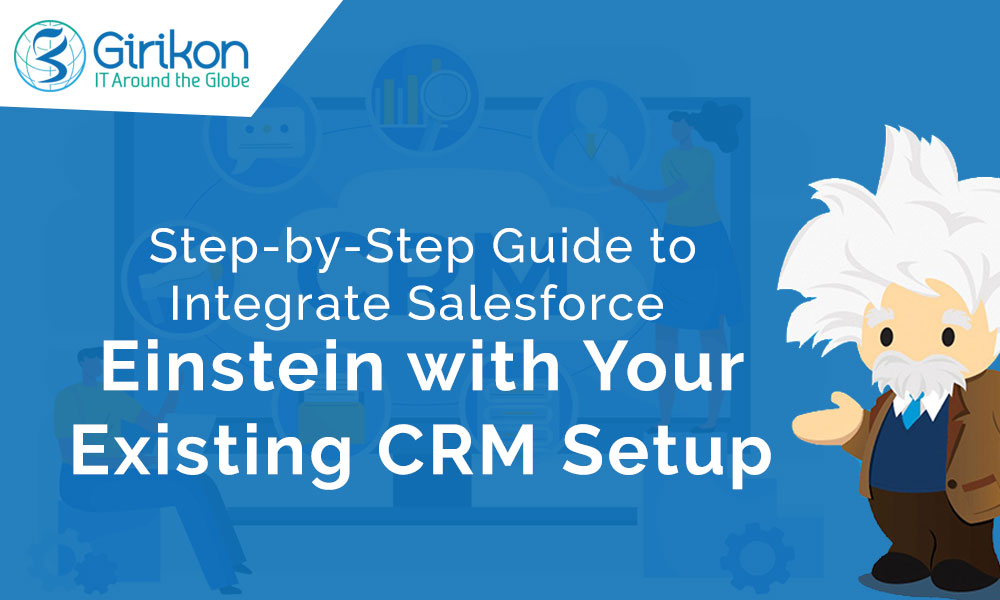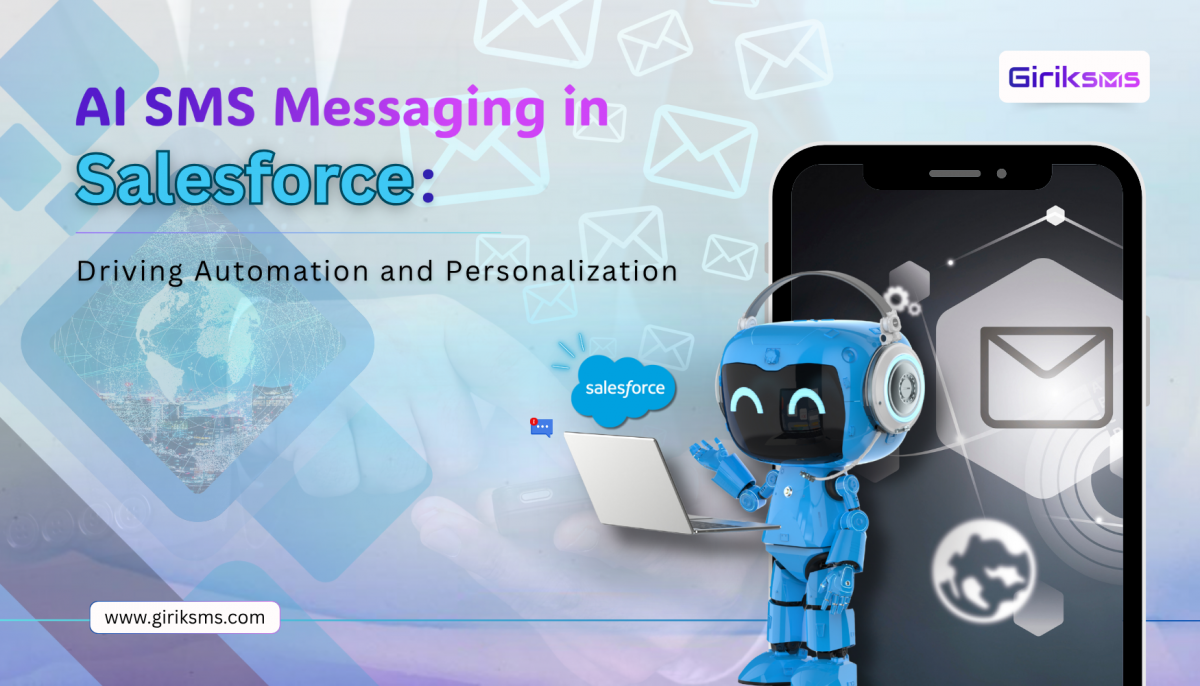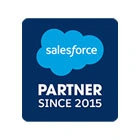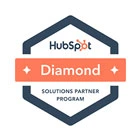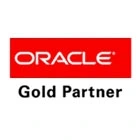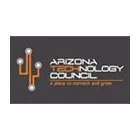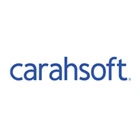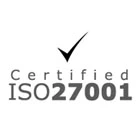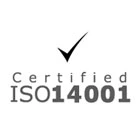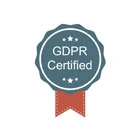In today’s digital era, businesses across different industry verticals are leveraging technology solutions to manage their business processes and streamline operations, and the financial services industry isn’t any exception. The shift towards digitization has pushed the financial services sector to accelerate its processes by leveraging robust technologies and adopting digital transformation initiatives such as cashless payments.
According to a survey conducted by Gartner, around 67% of senior finance leaders advocate the need for digitalization and focus on the optimization of finance technology.
Apart from this, other disruptive technologies such as Robotic process automation; Artificial intelligence, cloud services, and other financial business models have made their way. One such technology solution is the financial services cloud by Salesforce that provides tailored services to enterprises. The Salesforce financial services cloud has helped wealth management stakeholders ensure enhanced customer satisfaction through accelerated digital transformation. It is essential to seek Salesforce support to know more about this robust platform.
What is Financial Services Cloud?
The Financial service cloud is a platform provided by Salesforce and is available in the Lightning Experience. The platform is designed to create long-term customer relations while helping financial consultants offer high-end services. The cloud platform runs in a secure environment and can be leveraged by organizations to manage the assets and liabilities of their customers besides the accounts of investment and wealth management firms.
The platform is ideal for small and large enterprises as it allows financial advisors to deliver high-end solutions and technologies with tailor-made services. The platform is endowed with advanced features that enable consultants to spend less time gathering doing mundane tasks and focus on providing high-end assistance. The Financial service cloud encompasses several sub-verticals such as banking, mortgage, insurance, wealth management, and more.
Features Offered by Financial Service Cloud:
Enables Commercial Banking: Salesforce Financial Service Cloud facilitates commercial banking visibility in various aspects of wealth and finance, making it easy for consultants and relationship managers to make business-to-business referrals. This feature provides relationship managers with a customized layout that offers an optimum display of data and permission sets to access the Commercial Banking application. This allows relationship managers to manage their mortgage reports, referrals, treasury management, etc., more efficiently.
Helps Achieve Compliance: The Cloud infrastructure has helped organizations monitor customer relationships while following every interaction with a customer data model at the heart of the financial services cloud, which helps achieve compliance. The robust cloud solution helps the clients find new customers, grow their accounts, and close deals quicker while ensuring the security of client data and assessable client interactions across several channels.
Provides Better Visibility: Companies can access client profiles to view client interactions and the information shared. With this, the wealth ecosystem of the clients and their families can be accessed, allowing financial consultants to grow their business across multiple channels. This insight provides relationship managers a better know how of the personal and financial product needs of the customers and how it can be used to achieve their goals.
Enables Data Security: Before adopting new technology, organizations must fortify the security infrastructure. The Salesforce financial service cloud ensures robust security infrastructure for clients who have to undergo stringent security checks, inspections, and audits at regular intervals.
The Bottom Line:
Salesforce financial cloud built on the Salesforce CRM platform has revolutionized the wealth management ecosystem. The robust cloud solution enables the wealth management team members to access information drawn from various sources, including the financial interactions of clients. This provides companies with a 360-degree view of the client. So, if you wish to deploy Salesforce financial cloud for wealth management, you must partner with a certified Salesforce consultant.
Compared to yesteryears, customers today are more aware and informed and thus expect a personalized experience besides quality services and products. Since customers are the lifeblood of every business, retaining them, especially the existing ones, is crucial as they spend 31 percent more than the new ones. This calls for a robust customer retention strategy that will not just ensure an increase in revenue but also a decrease in overall cost. It is possible to acquire a higher level of customer retention by implementing a robust CRM (Customer Relationship Management) platform like Salesforce.
According to a survey conducted by Salesforce, it has been revealed that acquiring new customers or clients is more expensive than retaining the existing one.
How to Boost Customer Retention Using Salesforce?
Tracking Customer Interaction: It is possible to keep track of your customers with Salesforce integration. From where your customers are, when they made the last purchase to what they are looking for on your website, Salesforce helps you know everything about your customers and prospects. This will help you understand customer behavior and preferences while helping you respond to their needs appropriately. Moreover, you will be able to engage with your customers by sending them personalized messages/emails while introducing them to your products and services.
Unify the Database of Your Customers: Since Salesforce helps gather, organize, and analyze all your customer data in a single location, which helps in customer retention. Your sales team will access all the data easily while staying informed. With this, data accuracy is increased, and data duplicity is reduced. Moreover, client satisfaction is ensured as transparent communication is ensured between business and customers. By partnering with a Salesforce consulting company, you will be able to make the most of this fantastic platform.
Power of Personalization: For every business, customer data is a mine of gold. By centralizing this wealth of data to be personalized later, it is easy to resonate with your customers. By leveraging Salesforce integration services, you will be empowered to take control of your customer relationship by using tools such as Pardot dynamic content that allows you to personalize emails, subject lines, and more. By personalizing communication, you show your customers that you care for them.
Engaging Inactive Customers: Salesforce enables you to interact with inactive customers by keeping track of their customers by consolidating emails, calls, etc., by checking their purchase history and buying preferences, keeping them engaged via personalized messages, and more. This way, you will save money and acquire new customers.
Integration of Customer Service Tool: Several customer service applications such as service cloud, desk.com, etc., offered by Salesforce can be leveraged to eliminate silos ensure collaboration between teams, especially the account management and customer service departments. By leveraging these tools, overall customer experience can be improved.
Quick Wrap-up:
Businesses should consider harnessing the power of Salesforce to grow their revenue and profit. So, make sure you get in touch with a certified and reputed Salesforce implementation partner to ensure the successful implementation of this platform, which will ultimately help you retain your customers and build a strong relationship with them.
In this internet-driven era, customers prefer quicker and personalized communication, which can be made possible with a mobile app solution. From providing timely assistance to answering queries and sending personalized offers, a mobile app can help organizations be there for their customers when they need the most. Though text messaging is one of the most effective modes of communication, it becomes more effective when integrated with a robust CRM like Salesforce.
One such Salesforce SMS App is the Smart SMS App that empowers users to enjoy multi-channel conversations with bulk messaging, two-way messaging, personalized communication, messaging templates, and more. Listed below are some of the benefits of the Salesforce Text Messaging App and why businesses should consider installing them:
Engage Customers Globally: A Salesforce integrated SMS App can empower users to improve customer engagement and reach global reach through personalized SMS. Since people are usually on their phones most of the time, reading the message is very high. Moreover, service reps are also empowered to provide better customer experiences irrespective of where customers are.
Improved Read rate: Since text messaging offers a read rate of 98%, it is a great way to ensure that customers read your message as it leaves behind email marketing.
Know your customers better: Users can get feedback from their customers through surveys. Research conducted reveals that about 31% of customers respond to surveys through text.
Empower Businesses: The robust App empowers the marketing, sales, and customer service team to deliver an outstanding customer experience. Being a Salesforce integrated App, users no longer need a third-party application to run their SMS efforts as they even manage their messages directly from channels here.
How does SMS Apps work with Salesforce?
Salesforce integrated SMS messages can be used to ensure agent-to-customer conversations through automated methods such as bots and campaigns. Users can now set up long code channels to send a message to their company, and their agents can reply from the Service Console. In case they wish to one-time alerts and recurring messages, they require setting-up short-code channel.
Essential Features:
Salesforce integrated Apps are helpful for all types of businesses as it enables a more effective communication channel. It allows users to automate triggered SMS while customizing the responses.
Multi-channel Integration: This App helps users manage all the messages coming from different platforms in a single platform. It can connect seamlessly to other communication apps such as WhatsApp, Facebook Messenger, MMS, and more.
Global Reach: The App allows users to SMS to customers across the globe, which is a cost-effective way of communicating with users.
Two-way Sending: The App allows the sending and receiving of messages within your Salesforce platform.
Message Scheduler: The App allows the scheduling of messages, which gets disbursed to intended recipients at the scheduled date and time.
SMS Messaging Templates: The App has in-built message templates that any team member can customize without much hassle.
Final Words:
In a nutshell, it can be inferred that it makes sense to Send SMS from Salesforce to the targeted audience to take customer communication to a new level. When customers are engaged, sales deals are closed more easily.
Compared to other organizations, Nonprofits have to deal with complex challenges that might begin from finding the right beneficiaries, donors, and volunteers to retaining them by keeping them engaged. Apart from this, running external and internal processes efficiently, ensuring better reach, generating sufficient funds, and improving the effectiveness of their strategies are some challenges, which NGOs have to handle regularly. Irrespective of the size and area of work, the primary approach to managing a nonprofit remains the same, i.e., nurturing and retaining donors, beneficiaries, board members, and volunteers by building lasting relationships. With a robust CRM like Salesforce in place, streamlining processes and managing relationships becomes a breeze. It's prudent to get in touch with one of the best Salesforce consulting partners to know more about this platform.
As a cloud-based platform, Salesforce handles the administrative demands such as tracking all the interactions, sales, and details about your volunteers, fundraisers, attendees, and more. Salesforce provides an effective way of maintaining records of every interaction made with your organization.
What is Salesforce Non-profit Cloud?
Salesforce Nonprofit Cloud software is designed specifically for nonprofit entities. It helps them expand their reach digitally while extending their connections, streamline their internal processes, and break down the silos among program management, fundraising, marketing, and technology teams. It provides NGOs with a unified view of their current actions and operations.
Benefits of Using Salesforce for Nonprofits:
Keeps Nonprofits Organized: The nonprofit cloud for Salesforce has in-built functionalities that help NGOs deal with challenges involved in managing several activities such as grants, fundraising, and their workforce. The cloud platform also allows users to build personalized dashboards to help teams perform their job efficiently.
Increased Operational Efficiency: Salesforce's nonprofit cloud platform can streamline operations by paving the way for seamless communication between the various partners of the organization. With improved communication, synergy and operational efficiency increase, which helps NGOs to attain desired results and success.
Effective Management: The cloud platform helps NGOs properly manage certain activities such as fundraising, grants, and workforce without any hassle. The presence of several management features such as categorization of assets, automation of tasks, and more also proves to be helpful for nonprofit organizations.
Customization: Salesforce for nonprofits offers an option for customization. The software allows NGOs to customize the features as per their specific operational requirements. Though most nonprofits have a similar working model, some have unique needs. This is where Salesforce customization acts as a blessing as a disguise for them by customizing the features and functionalities that help them achieve their targets.
Accurate Reporting: Accurate reporting is an essential aspect of every NGO as it significantly impacts their mission and outcome. Consequently, choosing Salesforce nonprofit cloud for reporting is a prudent decision made by an NGO. This software is known for its reliability and precision, which will significantly benefit nonprofits.
Cost-effective: Salesforce for nonprofits is leveraged by NGOs for its affordability. As per the Power Us Program, the first ten subscriptions for nonprofits are entirely free for nonprofits. Post the free trial; organizations can get rewarding offers at reduced prices. This makes Salesforce a reliable partner that can help them get in touch with their customers while assisting them to widen their reach affordably.
Final Words:
Salesforce for nonprofits provides out-of-the-box features that help nonprofits develop strong relationships, increase engagement, organize operations, analyze the impact of work, draw actionable insights and save time spent on mundane tasks to spend on other essential tasks. As a nonprofit organization, if you are looking to implement Salesforce nonprofit cloud, you must consider partnering with one of the best Salesforce consulting companies.
Like any other industry, organizations that are a part of the healthcare industry are focused on augmenting health outcomes and driving efficiencies. However, most of them depend on legacy systems that fail to provide a 360-view of the consumers, thereby hindering collaboration and innovation. On the other hand, healthcare consumers have high expectations for personalization and easy access to medical resources.
To drive change, healthcare providers adopt robust and innovative solutions that can help them manage various processes in a more secure, seamless, and intuitive way. With an integrated CRM like Salesforce, healthcare processes can be optimized, costs can be minimized, and performance can be enhanced. Compliance systems can be developed, and a secure healthcare environment enabling 360-degree views to connect and engage every stakeholder can be created.
Studies conducted reveal that a significant percentage (about 83%) of healthcare administrations use cloud-powered solutions, while 9.3% aim to do so shortly. Since the release of Salesforce health cloud, healthcare providers can work more efficiently and collaboratively, which not just leads to better patient and provider relationships but also better health outcomes. It makes sense to get in touch with one of the reputed Salesforce consulting partners to know more about it.
Let's understand the reasons why healthcare providers should leverage Salesforce:
Connect Siloed Systems: Like any other industry, data siloes are created due to disparate systems. Hospitals use multiple disparate systems in the healthcare industry, including EHR, insurance claim systems, billing and marketing details, lab reports, and more. Since this humongous amount of data is scattered across multiple systems, it isn't of much use. A cloud-based CRM like Salesforce can help integrate all the systems so that data can be securely integrated into a single place. This allows healthcare providers to work more efficiently, make informed decisions, and focus more on patient care.
Make Use of Data Intelligently: Salesforce can be leveraged to improve health outcomes. Tools like Tableau provide actionable insights that healthcare providers can use to anticipate and fulfill patients' needs. In other words, Salesforce allows healthcare providers to make data-driven decisions that will lead to greater patient-provider satisfaction and better health outcome.
Augments Collaboration of Care Team: Salesforce health cloud allows healthcare providers to create 'Care Teams' as it is built upon the capabilities of the service cloud. Care teams comprise household caregivers, physicians, specialists, or anyone involved in a patient's healthcare journey. Depending on their positioning in the team, participants can view a care management plan; allocate tasks while sending messages to and from any device. Care teams promote collaboration, which increases productivity, which is a win-win situation for patients and providers.
Personalized Experiences: Consumers expect personalized experiences and Salesforce can be leveraged to personalize the healthcare journey of people at every step. By consolidating clinical and non-clinical data in one place, personalized plans can be created. Patient communication can be managed based on patients' preferences through texts, calls, or the Salesforce community’s portal.
Ensure Data Security: One of the major concerns for healthcare companies is data security, as a breach in security can put patient safety at stake. Salesforce allows healthcare organizations to stay in compliance while ensuring data security. Using Salesforce health cloud and Salesforce Shield, electronic protected health information can be encrypted, which is only accessible to authorized users.
Quick Wrap-up:
As the world continues to deal with the pandemic, healthcare providers require operating as efficiently as possible while providing high-quality care. Salesforce Health Cloud aids this in several ways, but it all boils down to one advantage, i.e., providing a 360-degree view of the patient. By enabling intelligent usage of data at various stages of the patient care journey, healthcare companies are empowered to provide the level of service that patients expect. To implement Salesforce health cloud, it is important to get in touch with one of the reliable Salesforce consulting companies.
The year gone by (2020) had been extremely challenging, with the Covid-19 pandemic wreaking havoc on the lives and livelihoods of people. Most businesses were not prepared to deal with the challenges brought about by the pandemic.
Why Digital Transformation is a Must?
Businesses should bring a robust solution to fulfill their customers’ needs and expectations while meeting business objectives. Let’s analyze what has changed across different industries and how a robust CRM like Salesforce can help them keep up with the evolving requirements. Though the benefit of digital transformation is immense, it is essential to understand that digitization isn’t enough to keep businesses afloat during tough times.
Introducing an innovative solution while planning digital transformation ahead of time is necessary to drive progress. In other words, long-term planning is no longer a priority; rather, it has become a mandate as changes can happen overnight. Businesses should consider availing themselves of reliable Salesforce consulting services to know more about this platform.
Accurate Data that Powers Decision Making:
Access to accurate and relevant customer data is the secret sauce to a company’s success. With cloud-based software like Salesforce in place, organizations can gather and analyze customer data based on their behavior and preferences. The insights gathered can be used to adjust their marketing campaigns and improve products and services while allowing them to respond to their customers better. Such decisions will help them draw better results while fulfilling their business objectives.
Opportunity to work remotely: Though this approach isn’t applicable for all types of businesses, the possibility to work from home offers immense benefits for several companies. Consequently, during the global lockdown imposed due to the pandemic, employees could work remotely and access all the crucial corporate information they required easily. As a cloud-based CRM, Salesforce provides a single workspace where team members can access any data needed for working with partners, clients, and colleagues.
The connection between Employee and Customer Experiences: As discussed above, businesses need to develop innovative solutions to ensure that their people have access to everything required to ensure the smooth functioning of business, even during tough times. In other words, prioritizing the needs of your employees is equally important as your clients’ as satisfied and happy employees ensure better and increased performance and increased customer satisfaction rates.
Ways to Ensure Better Employee Productivity: Salesforce has introduced Salesforce Einstein Voice Assistant, an AI-powered technology that has helped businesses better connect with their customers and partners. Organizations can leverage the recent introduction of Einstein Automate to streamline their processes and automate mundane and time-consuming tasks. This helps in saving time, which can be used to do more productive tasks. Businesses should consider leveraging Salesforce integration services to integrate this robust tool within their business platform.
New Acquisitions and Growth Rate: Recent Salesforce financial reports reveal that the revenue for 2020 surpassed $17 billion with an annual Salesforce growth rate of around 29%. Moreover, with the new acquisitions made by Salesforce over the past few years, the platform is now positioned beyond a traditional CRM. It provides its customers with an all-in-one tailor-made solution to serve businesses of all sizes and across different industry verticals.
The Road Ahead:
Over the last couple of decades, Salesforce has come a long way from being a traditional CRM platform to an all-encompassing system that can serve the needs of businesses of different sizes and across various business domains. The platform offers a wide array of integrated solutions that allow companies to choose the components that best meet their needs. Given the wide array of features, functionalities, and components offered by Salesforce, it has become the go-to platform for sales and marketing departments of different organizations.
Salesforce is a leading name in the CRM space due to the wide array of features, functionalities, and components offered by it. Regardless of their size and business domain, businesses across the globe are leveraging this robust platform to resolve their unique business while enjoying operational efficiency. However, implementing Salesforce is easier said than done as user adoption problems arise due to cultural change in the organization. It is worth partnering with a certified Salesforce consultant if you wish to ensure a seamless implementation journey.
Let's discuss in detail the common Salesforce adoption problems and ways to tackle them:
Resistance to Change: Employees usually show resistance when they are expected to handle a newly implemented system, primarily when they haven't dealt with the same beforehand. It is essential to understand the reasons behind this resistance, which mainly includes the absence of understanding and training. Before embracing Salesforce, abundant training and support should be provided to the users.
Data Inconsistency: Several users associate their CRM with different users, which may impede their data inconsistency. It's suggested to use Salesforce as the center of all their data and acquit themselves with different frameworks from that point onwards. It is crucial to note that old, fragmented and obsolete data decreases the legitimacy of their Salesforce reports and frameworks and drives sales reps crazy.
Complicated Entries: It becomes difficult for Salesforce users to work on long page layouts and unwanted fields as long page layouts require too much scrolling. At the same time, too many areas contribute to insufficient data. It is essential to keep it short and straightforward to ensure that users can gather data without hassle.
Absence of meaningful reports and dashboards: Salesforce reserves a vast amount of data, and it can be leveraged to generate actionable insights. However, users tend to lose interest if the reports generated are vague, which drastically impacts the adoption rate.
Not Leveraging the Complete Potential of Salesforce Workflows: Not utilizing Salesforce workflows is a common blunder, which Salesforce users usually commit as Salesforce workflows can help increase productivity by sending reminders for renewal, auto emails, notifications regarding stale opportunities, and more.
How to Tackle Issues Related to Adoption?
Begin with a Pilot Project: It's essential to do a pilot project before implementing a system. In this way, testing can be performed, gaps can be identified, and user's requirements and practical issues can be understood. To run a pilot project, it's important to select a user group and provide them with the necessary training materials to run the platform effectively.
Understand End-user Requirement: To implement Salesforce successfully, it is important to loop in the Sales team and discuss with them the dashboards, reports, features, and functionalities. By considering their viewpoint, it will be easy to streamline Salesforce configuration while increasing the user adoption rate. It is crucial to articulate the arrangement and set their expectations from day one. Users need to focus on a strategy that not just fits all the requirements of the stakeholders but is also consistent with their workforce.
Training: Quality training should be provided to users to understand the basic motive behind implementing Salesforce and how it can benefit them. With proper training, users can tackle errors that might arise during the Salesforce journey.
Quick Wrap-up:
In a nutshell, it can be inferred that the success and failure of a newly implemented system depend mainly on how well users are accustomed to its' usage. The better the users are adapted to the system, the greater are the chances of achieving higher ROI. By partnering with one of the best Salesforce consulting companies, organizations can ensure a greater adoption rate.

 +1-480-382-1320
+1-480-382-1320 +44-7428758945
+44-7428758945 +61-1300-332-888
+61-1300-332-888 +91 9811400594
+91 9811400594